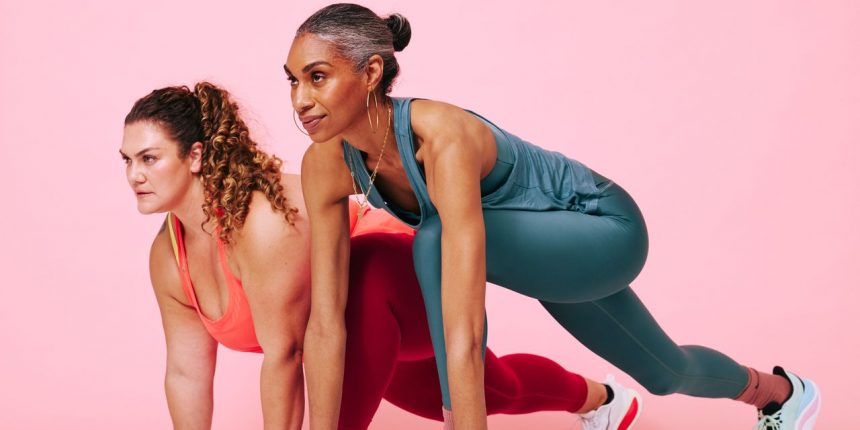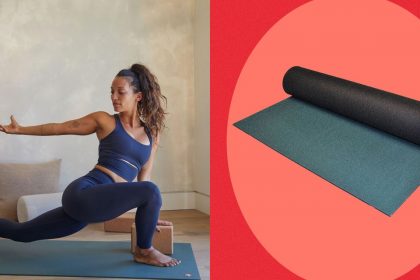Running is one of the most popular ways to exercise—and among the most polarizing. For every person who happily sets 4:00 a.m. alarms on race morning, there’s another convinced the sport is too hard, too boring, or a waste of time, if not outright harmful. The difference between the two can feel insurmountable.
When people find out I’m a regular runner, a running-focused writer, and a running coach certified through the Road Runners Club of America, they quickly let me know which side of the divide they’re on. If they’re not pulling up their Strava profile or pointing out their rack of race medals, they’re listing all the reasons running isn’t for them. The middle school gym coach who assigned laps as punishment, the time they tried a mile and couldn’t make it around the block, the false notion that running wrecks your knees—I’ve pretty much heard it all.
And look, everyone’s entitled to their opinion (though if it’s your knees you’re worried about, I kindly suggest you also consult a medical journal or two to dispel that particularly persistent myth). No one has to run, and if it’s truly not your vibe, I am not here to pressure you. I release you to find a fitness habit you actually enjoy! (And if that’s lifting, may I suggest you try SELF’s strength-building program?)
But if you’re still reading at this point, I have to assume that you’re at least a little bit running-curious. Whether you’ve tried it before and it didn’t stick or you’ve never really known how to start, SELF’s Learn to Love Running Program might be just what you need to finally unlock the secret—and work your way up to 30 minutes of running, nonstop.
I’m a 24-time marathoner who’s been running for nearly 25 years; I started running as an adult, so I know the first steps can feel like A LOT. That’s why I created this 12-week program along with Amanda Katz, an NASM-certified personal trainer and running coach in New York City. The goal here isn’t to prepare for a specific distance or race. While these competitions can be great motivators, I firmly believe you set yourself up for the best long-term success in running (and love of it!) if you ease in with flexible goals and timelines.
Instead, we aim to provide you a solid foundation that starts you off on the right foot, literally and figuratively. We want this to be the beginning of a beautiful, yearslong relationship with running—and we know it could be, as long as you have the right tools and mindset at your disposal. Here’s what to know before you start.
If you can walk for 30 minutes straight, this plan is for you.
We start with walking in this program because, well, you gotta walk before you can run. Your first week’s worth of cardio will be walking, but starting in Week 2, we’ll start sprinkling in running intervals. Over time, those will get longer and your walking intervals shorter—building up to your final day of the program, where you’ll run a full 30 minutes without stopping.
If you’re not at the 30-minute mark for walks quite yet, you can get there! Just choose three days per week for walking and start where you are, whether that’s around the block or 10 minutes. Each week, try to go a little bit further. Once you’ve built up to a 30-minute brisk walk, you can begin Week 1 of the program.
One other note: If you haven’t been exercising at all for a while, it’s a great idea to check in with a medical pro before you begin this (or any other) exercise program. That’s especially true if you have a chronic health condition or mobility concerns.
You’ll master the number one key: consistency.
You won’t run every day—but you will run regularly. In my experience, the sweet spot for building a running habit is three days per week, so that’s what I’ve programmed here. This provides your body with a strong enough stimulus to strengthen your muscles, bones, and cardiovascular system while also allowing enough rest time, which is when all those vital physiological adaptations occur.
Your three cardio workouts are scheduled on Monday, Thursday, and Saturday, but you can shift them around as needed. Just aim to space them out regularly, leaving at least a day but no more than two in between. This keeps you in the right rhythm to reap rewards while decreasing injury risk.
Your weekly schedule includes a “long run.”
Over time, your third weekly cardio workout becomes a bit longer and more challenging, which helps you build fitness and endurance. That’s one reason why it’s slotted on Saturday—so many of us have more time to train (and also recover) on the weekends.
Note that there’s one weekly longer session; you don’t want to go overboard. Even experienced runners training for a marathon typically only do one long run per week. Getting into the habit of mixing up your distances allows you to maximize your progress without extra strain on your body (or, for that matter, your calendar).
Each week builds up…unless it doesn’t.
The core of this program is gradually building up the total time you spend running, so you’ll notice a linear increase as you check off each week on your cal—well, mostly. Say hello to cutback weeks! Weeks 5 and 9 deliberately decrease your amount of running time after several weeks of building. These are so, so vital and are another way to allow your body to adapt to all the hard work you’re doing so you can go even longer and stronger the next week.
And sometimes illness, travel, or, well, life, also make it a necessity to cut back, even outside of the plan. And that’s perfectly fine! If you happen to miss any of the weekly workouts, feel free to repeat the whole week (or even skip back to the week before that) rather than pushing ahead.
Along that note, if you find that the jump from any one week is feeling a bit too big, go ahead and repeat the one you just did. This doesn’t mean you’re mentally or physically weak, unfit, or not “meant” to be a runner. On the contrary, taking your time because you notice some extra fatigue, soreness, or a dip in mental motivation means you’re listening to your body and avoiding overreaching—a crucial skill for staying healthy throughout your running life. (All that said, growth comes when you step outside your comfort zone, so we encourage you to try the next step if you’re just a bit unsure!)
“Comfortably challenging” is the name of the game here.
Nope, not breathless, not gasping for air, not completely winded. Rather than aiming for any particular speed, your goal is to keep your effort relatively steady—and pretty comfy. Gauged by the “talk test,” you should be able to speak more than a few words when you’re running, but you shouldn’t be able to sing. Consider this around 3–4 on a scale of 1–10. You don’t need a watch or app that tracks your pace, heart rate, or any other metrics for this plan; it’s all by how hard you feel like you’re working. For your walk intervals, keep them brisk, or around 2–3 on that effort scale.
This means when you start running, you may find you have to slow down a lot—more than you thought was even possible—to stay at that effort level. Don’t worry if it takes you a little while to get the hang of running at an easy pace; you have 12 weeks to practice it.
Run outside or inside—it’s up to you.
Also, no treadmill shame here: It’s 100% acceptable to do your walking and running on the ’mill if that’s what’s easiest, most accessible, or most appealing! Just select a speed that matches that 2–3 out of 10, talking-but-not-singing effort for walking, and a notch higher (3–4) for running.
You’ll do more than just run.
We recommend you begin each cardio workout with a dynamic warm-up designed to prepare your heart, lungs, joints, and muscles for the movements you’re about to do, and that you finish with cooldowns to ease your heart rate back down afterward while increasing mobility. Don’t worry—we’ve created warm-up and cooldown routines to take out any guesswork!
You’ll also do one day of strength training per week, moving through three phases of a progressive program designed especially for runners. These exercises strengthen and stabilize your muscles and tendons to reduce your risk of injury and also make you a smoother, more efficient runner, which eventually can help your performance. One special callout: Your routines will include plyometrics, which are rapid, explosive movements that build agility, power, and balance. These are especially helpful for runners; the sport, after all, is also a series of single-leg hops.
You’ll have two full rest days, and one optional active recovery day, when you can opt into one of our expertly designed mobility routines to complement and balance out your cardio and lifting. These increase your range of motion, decrease stiffness, and increase blood flow in a way that doesn’t add extra stress or impact to your body.
You don’t need much equipment.
While some commonly held beliefs about running just aren’t true, there’s one that is: You don’t need a ton of gear to get started. Most important is a good pair of shoes. It’s also helpful to have a way to keep time, whether that’s a watch, app, or treadmill display. The strength training routines require only dumbbells and either a bench or a step.
You’ll learn you can do hard things.
Know that it’s normal for running to feel a little bit awkward or challenging at first. But also, we’ve designed this program to minimize the difficulty and intimidation factor. And if you stick with this setup, it will begin to feel much more doable, more natural, and even fun—promise! In fact, I happen to think that’s one of the reasons people who stick with it do eventually embrace it. Overcoming challenges and coming out stronger on the other side feels damn good!
Ready to finally see what the fuss over running is all about? Let’s lace up and get started. We’ll be with you, stride for stride, every week with helpful tips and words of encouragement as you work toward the big goal of a 30-minute run.
Photography: Katie Thompson. Wardrobe styling: Kathleen Thomas. Hair: Walton Nunez. Makeup: Miranda Richards.
Morit Summers (left), a Brooklyn-based trainer and the owner of body-positive gym, Form Fitness Brooklyn, wears: Lululemon top and leggings, Aerie sports bra, and Nike sneakers; Ameerah Omar (right), city captain and mindset coach for Adidas Runners NYC, wears Alo top, leggings, and sports bra, Nike socks, and Hoka sneakers.







